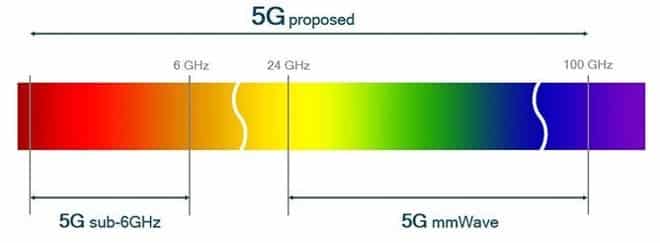5G is about to get even faster after recent mmWave auction
5G has been commercially available in Australia since 2018, and there’s a good chance you’ve already experienced its fast download speeds and low latency if you’ve bought a 5G phone plan.
However, believe it or not, we haven’t even cracked the surface yet – 5G is going to get a lot faster. Prior to its launch, reports of speeds as high as 100 times that of LTE networks were expected. But we are yet to see that actually happen.
However, the government just auctioned off the 26GHz spectrum (popularly known as mmWave) to the major telcos, setting them on a path to faster 5G speeds. This brings us closer to those pre-5G launch expectations.
In this article, we’ll discuss the allocated mmWave 5G spectrum for Telstra, Optus, and Vodafone, and how it’s going to impact the 5G environment in Australia.
What is mmWave 5G
If you’ve already experienced 5G in Australia, then you probably used the network on the 3.6GHz band – the sub-6GHz frequency range where current 5G networks from the big telcos are.
mmWave 5G refers to the 24GHz to 100GHz frequency range, where the blazing fast speeds of up to 100 times LTE networks are. And until now, we could only wait for the government to unleash this spectrum. Now, they finally have.
The 5G spectrum. src
Some other countries (the United States, for instance) have already allocated mmWave spectrum for 5G networks. And Apple has already released an mmWave-capable iPhone 12 model for such markets. Now that Australia has finally auctioned off mmWave spectrum to Telstra, Optus, and TPG Telecom/Vodafone, perhaps we could get a tasted of mmWave-capable devices fairly soon.
In fact, Telstra began testing the faster 5G network last year before the recent auction. The telco launched the Telstra 5G Wi-Fi Pro, which is the only mmWave 5G-capable device retailing in Australia right now. The pocket WiFi device performs faster and better than normal 4G/5G devices, but without the mmWave network live yet, users are yet to get a taste of its full capabilities.
Telstra, Optus, and TPG Telecom/Vodafone mmWave 5G spectrum allocations
Last month, the government finally auctioned off mmWave spectrum for 5G in the 26GHz frequency range. Here’s a look at what Telstra, Optus, and TPG Telecom/Vodafone got:
- Telstra
As expected, Telstra entered the highest bid gotmmWave spectrum. The telco announced its intention to grab 1000MHz of the spectrum, and is spending $277m to do so. According to Telstra, this allocation is more than 10 times their current 5G bandwidth. - Optus
Also as expected, Optus entered the second largest bid at $226.2m. The telco took 800MHz for Sydney, Melbourne, Brisbane, Perth, Adelaide, Canberra, and regional Australia, and 600MHz for Margaret River and Hobart. - TPG Telecom/Vodafone
TPG spent $108.2m for 400MHz of spectrum to be used in Sydney, Melbourne, and Perth, and 600MHz for Brisbane, Adelaide, Canberra, and regional Australia.
What can we expect from mmWave 5G?
The 5G bar will continue to be raised as the roll out continues. For now, we’ve entered the mmWave stage, where we expect to see major improvements in speed, bandwidth, and latency.
Of course, mmWave’s major contribution to making 5G better is the larger bandwidth that its higher spectrum brings to the networks. This accommodates for even more connections than now, and in turn allows for faster speeds.
Lambo Kanagaratnam, Managing Director of Optus Networks, gave some examples of what mmWave 5G brings to Australians. He indicated that in an event occupied with thousands of viewers in the audience, all connected to a 5G network with their smart devices accessing different parts of the Internet at will, current sub-6 networks might experience some lag. With the higher spectrum mmWave 5G, however, such data usage will be virtually lag-free in such an environment.
This also applies to business and larger corporations and enterprises. The mmWave spectrum will allow for bigger applications like remotely controlling robotics and IoT devices in faraway warehouses without dropped or lagging connections, or creating large private networks for groups like schools where thousands of students and staff can gain access without lag.
Final words
5G is already fast on the current sub-6 spectrum – in a recent Systemics PAB test, Optus 5G speeds averaged 326Mbps and peaked at 1425Mbps, while Telstra 5G speeds averaged 295Mbps and peaked at 904Mbps.
But these speeds are expected to become even faster than they already are once telcos start making use of their recently acquired mmWave spectrum. And as we wait to see the results, perhaps we’ll see more 5G devices that are capable of using the 26GHz band, bringing us closer to earlier predictions of 5G speeds of up to 20Gbps.
